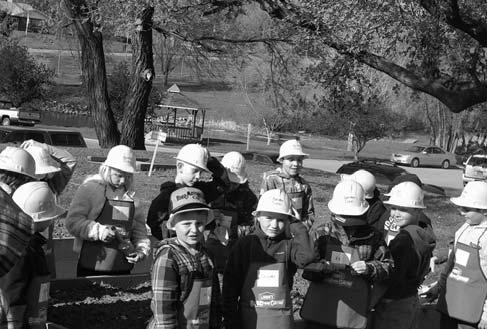
18 minute read
Good News from South Dakota Schools
The following articles were previously published in The Good News Bulletin by the Associated School Boards of South Dakota.
Baltic 2nd Grade Students “Grow” in their Learning
Advertisement
If you give a class of 2nd grade students some composting worms, they will make a garden to go with them. That is exactly what happened last fall in Danielle Eszlinger’s 2nd grade classroom in the Baltic School District.
The class adopted some composting worms from another 2nd grade classroom and the ideas started flowing about how they could use the rich compost created by their castings.
The kids went to work creating a plan to build a school community garden.
They started by learning about different kinds of gardens and the different types of plants they could grow. The kids worked closely with Chris Zdorovtsov from the SDSU Extension Office to learn about the care and maintenance of a garden. They decided if their garden was going to be one that the entire community could enjoy, it needed to be a raised bed garden.
With the new information and preliminary garden plans, the class set off to learn more about the existing ground bed community garden.
The students enlisted the help of a local pastor, Ryan Franchuk and congregation member Laura Garness, of Christ Fellowship Church. This church started the original ground bed community garden. The congregation supported the idea of raised beds for the community garden and decided to join the class to make it happen.
Now that the 2nd grade students had a place to put the garden, they needed to let the school and city leaders know their plan.
Zdorovtsov worked closely with them to develop a blueprint for the garden layout. The students created a PowerPoint presentation full of meaningful information that would give the city council and school board insight into their goals for the garden and how it would benefit their learning and their community.
With all of the pieces in place, they went to a Baltic school board meeting to get their approval. Then, they moved on to the city council with their request. At each public meeting the kids were confident in their knowledge and had practiced their public speaking skills to effectively communicate their mission. They received overwhelming support and approval from both the school board and city council.
After receiving approval, the work really began. The 2nd grade students needed to set up a growing system in their classroom to start the young plants during the winter months.
They also needed to find funding to support the construction of 31 raised garden beds of varied sizes. At the same time, they needed to continue to learn more about their composting worms and other ways to support a healthy garden so their thumbs would be nice and green by the time they were ready to plant. They embarked on a robust fundraiser that included a story in the local newspaper, advertising flyers, and a number of personal presentations for local residents and businesses.
Along with the campaign, they found local master gardeners to partner with them in teaching them about garden plants, healthy soils, and bugs that can help or hurt your garden.
The kids went to work installing a greenhouse system in their classroom to start tomatoes, cucumbers and various other plants.
Steve Sikorski, a master gardener, came to their classroom to help them create one of the garden boxes using 2X12 lumber and power tools. In turn, the students put their new expertise to work over the next three weekends building the remaining boxes with their family, friends, classmates and community members.
Zdorovtsov and Sikorski continued to make their regular visits to their school to offer guidance and support in the process. Many parents and community members also offered their fields of expertise to assist in making this lofty goal become a reality.
When spring finally came it was time to put all of the pieces of this garden puzzle together.
What else could the kids do, but have a garden party?
They planned a celebration for the entire school and community to participate in. There were shovels handy so the guests could help with planting, there were rocks to paint, maps of the garden plan and of course, treats, but not your normal party treats.
The treats consisted of things that could be grown in a garden—carrot and celery sticks and dip, bruschetta made with different peppers and veggie kabobs.
The entire class came out on a beautiful spring evening to share their learning, their excitement about the garden and the importance of the garden that will be a long lasting part of their community.
As the summer months passed, the kids and community came together to water and weed the garden and enjoy its harvest.
In the fall, the founding group of 2nd grade students moved on for new experiences in 3rd grade, yet they always have a role in the care and maintenance of the Baltic School and Community Garden.
They leave a legacy of learning for the next group of students because as all gardeners know, there will always be plants to grow, weeds to pull, features to add, and of course, worms to care for.
Reduce! Reuse! Recycle! for a better Deubrook Area School
Last summer, when Dawn Leuning attended the four-day summer professional development with the South Dakota Innovation Lab, she designed a transdisciplinary learning experience for her fourth grade students around understanding the importance of reducing, reusing, and recycling.
Leuning created a plan with standards aligned with all disciplines, let her students take ownership of the project and molded the design to best engage their interests to help positively impact the amount of waste generated by the classroom, school and community.
The students started by learning the differences between reducing, reusing and recycling.
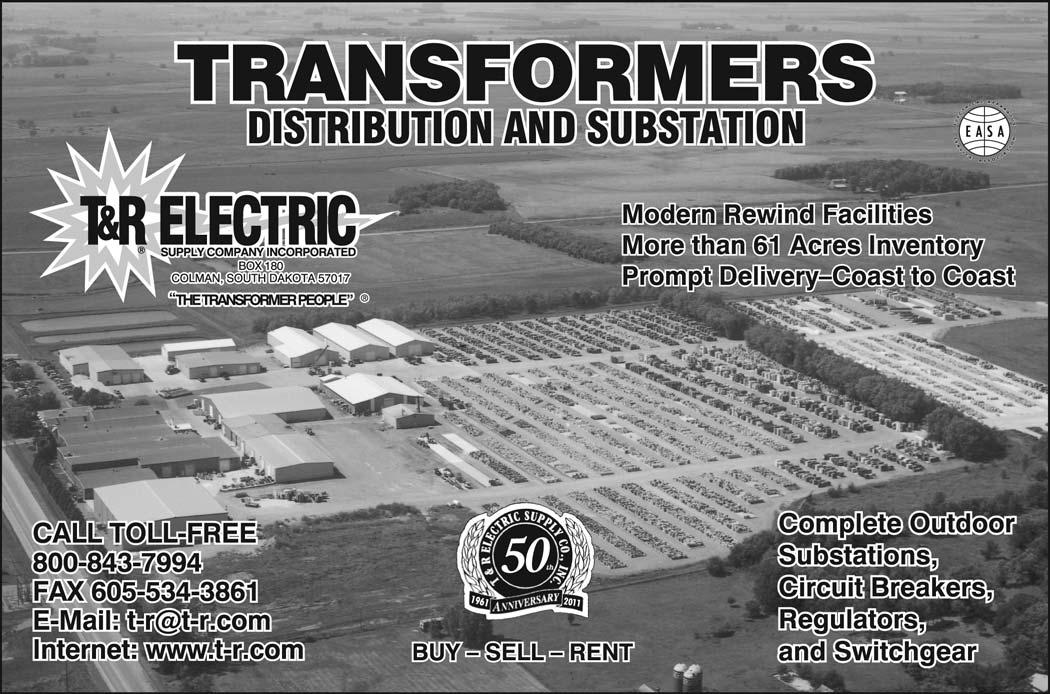

Soon, they were able to identify several areas where they needed to improve their habits to take care of the Earth. The fourth graders decided a good place to start was to collect recyclables from their school. They researched recycling programs in other schools, collaborated with the sanitation workers in their community and even partnered with their school janitor as an advisor to the program.
Recycling is a very important part of the green planet equation, but reducing and reusing are equally as important.
The fourth grade students made an effort to employ those strategies into their everyday living. As in most schools, paper is a widely used supply but the kids noticed very few pieces of paper were utilized on both sides. That needed to change.
The class started by saving paper on which only one side had been used by putting it in a tray in their classroom for reuse. Then, they started saving their spelling test sheets to use them over again the following week. They have spread the message of using both sides of paper through announcements and education talks to other classrooms.
Students took their learning outside the classroom with a field trip to Cook’s Recycling and the Brookings Landfill.
The recycling experts at Cook’s Recycling gave the kids a tour of the facility, helped them understand the guidelines of effective recycling collection and shared the rules for recycled materials to help define what truly can and cannot be recycled. The kids gathered these and more facts and ideas to take back to their school project.
“It was amazing how many things can actually be recycled,” Fourth Grade Student Catherine Klein said.
Students also had the opportunity to see what happens to a landfill when it is no longer in use.

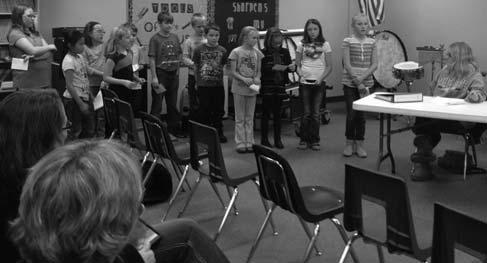
Dakota Nature Park in Brookings provides visitors with an opportunity to observe nature at the site that once served as the City of Brookings Landfill. The landfill has since been capped and has fulfilled the environmental monitoring requirements of the South Dakota Department of Environment and Natural Resources.
“I couldn’t believe how beautiful Dakota Nature Park in Brookings was,” Fourth Grade Student Ellie Koenig said. The class’s latest project was to develop and deliver a presentation to the school board to put recycling receptacles in the school. The class presented results of a survey of the students and teachers in the elementary school which showed there were 20 areas in the building that were in need of a recycling receptacle, including the lunch room where milk cartons can be saved from the garbage and added to recycling.
Deubrook School Board members approved the class’s request and the receptacles will be placed in every classroom and other areas around the school.
The efforts of Deubrook’s fourth grade class are making a difference in their school. Now the kids are working on expanding their plan to their community. They are brainstorming ways to share recycling information and develop a collection bin system for residents. This will require more research, more time spent consulting with their industry partners and more effort put into writing and preparing their plan for presentation. Authentic learning with applied practice is the goal of problem based learning and the fourth grade students at Deubrook are realizing this all while doing good for the planet.

Groton Area High School Named on Newsweek
List
Groton Area High School ranked 158th in Newsweek Magazine’s top 500 highest performing schools in the nation in the magazine’s report released last fall.
Newsweek’s list of “America’s Top High Schools” is a ranking of schools based solely on achievement. The schools are ranked based upon performance indicators (for example, proficiency rates on state standardized assessments).
This evaluation identified high schools that perform at or above the 80th percentile within each state. In order for Groton High School to receive such a high ranking, several factors must exist: top quality teachers, hard working students, strong parental support, and a wide variety of activities to challenge and motivate their participants.
Groton Area High School Principal Anna Schwan said there was an extensive list of questions that had to be answered for the report.
Nearly 89 percent of the Groton’s graduates plan to attend college and almost that many (88.55%) graduated from high school this past spring. The poverty rate (12.89%) for the school district is part of the formula used by the national magazine. Statistics also revealed that Groton’s score for college readiness was 89.67.
First Impressions Mean A Lot at L. B. Williams Elementary
L.B. Williams Elementary students in Mitchell know the importance of a good first impression after a year embedded in problem based learning focused on first impressions.
The idea started with two teachers from LBW—Cheryle Aslesen, multiage 1st and 2nd grade, and Stacy Morgan,
ARENS ENGINEERING
municipal engineering water & wastewater engineering storm drainage - municipal streets Vernon Arens, PE 230 Capitol St. j Yankton, SD j 57078 605-665-2002 j Fax 605-260-2140 arenseng@iw.net
5th grade. They made a plan to address a real problem in their school—the lost and found box. At a South Dakota Innovation Lab summer professional development week, the teachers put together a plan around improving the appearance of their school for visitors, students, and staff.
Aslesen and Morgan never imagined how that project would grow once it got into the hands of the kids.
The teaching team collaborated together to create experiences that were tailored to the learning at their grade level in accordance with the standards, but they also rose above and beyond those expectations to immerse their students in group and individual tasks across grade levels that would challenge their thinking and require problem solving skills.
First, they worked around the idea of what someone’s first impression of them is and the character traits that provide a good first impression.
The next step was to identify what the first impression of L.B. Williams School is. The kids found several things that they wanted to address, but decided to focus on the lost and found. They determined that based on the number of clothing items that are left behind every year, there had to be a better way to return lost items to their rightful owners. They started out by creating a brightly colored, much more presentable box to place the lost and found items in.
Then it was up to the youngest students to sort and organize those items and place them into containers labeled by the specific purpose they served—gloves and mittens in one box, shoes in another, shirts and sweatshirts in another, and the sort went on.
The older kids then took those items and determined the value of each item to report out to the families of the school and also photographed the items and sent them on to the school website designer to be posted on the LBW site for parents to view and identify. Students kept records of the items and donated them to the Salvation Army after they had been displayed for one month. They also sent out reminders to parents to label their child’s clothing so it would be easier to return and they made announcements to the school to remind kids to make sure they come inside with both mittens, their hats, scarves and other articles of clothing.
According to L.B. Williams Principal Becky Roth, the students were quite engaged with the process.
“I was amazed to see the students using their critical thinking skills to truly understand the different aspects of what all needed to be accomplished with this project,” Roth said. “By connecting the hands-on learning experience with a ‘real-world’ problem to solve was a positive educational experience for our students.”
Once this problem was tackled and a system was in place the kids decided to extend their efforts to the community.
They made presentations at businesses and to city officials about the first impression of their community.
Based on the students’ plans and the importance of their message, the Mitchell ‘Do Good’ grant provided by Mitchell Telecom was awarded to the classes in the amount of $1,500 to improve the first impression of Mitchell.
It was back to the design cycle for the kids to create a plan. Students decided to put all of their efforts into the Visitors Center just off of I-90 at exit 332.
They collaborated with local garden and landscape centers, a local curbing company and city officials to create a plan to landscape around the Mitchell welcome sign and add planters to the visitor’s booth. The kids had to work out a budget, research plants that would be viable at that location and create a design for the area. All of these skills helped them meet their grade level standards while participating in real learning around solving a real problem.
The final presentation of their learning included a ribbon cutting event at which Mitchell Mayor Ken Tracy made a speech and there was a picnic at the Visitor’s Center for the kids.
“Working on the Visitor Center project was my favorite,” L. B. Williams 2nd Grade Student Cella Nath said. “I especially enjoyed brainstorming with the 5th grade students throughout the year.”
The project was completed in the spring of 2014, but that didn’t mean that it was over. The kids had to work out a schedule to maintain the area during the summer months and evaluate the effectiveness of their entire project.
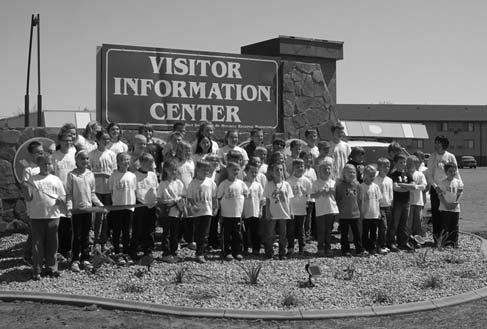
LBW students also evaluated the effectiveness of the lost and found project at the end of the year. They discovered that over $1,000 worth of clothing was given away from the lost and found at the end of the year. This meant that the problem would have to be addressed again in the 201415 school year, which is exactly what is happening.
Under Aslesen and Morgan’s guidance, a new group of kids have evaluated their design and are working on modifying the project. The students at LB Williams continue to modify the project and their teachers are realizing that the greatest learning happens in the modification stage.
Looking at problems as an opportunity is a valuable skill these students will carry with them.
Progressive Community Leadership Project
The Parker School District went through a relatively unique experience in 2014-2015 when it experienced a significant turnover in staff.
Two administrative positions were new hires, which encompassed superintendent, high school principal, junior high principal, elementary principal, activities director, special education director, and Title I director.
There were also twelve new certified teachers hired, along with three paraprofessionals, which encompassed nearly 40 percent of the staff that works with the students of Parker.
The vision and goals for the new administrative staff centered on staff unity, community involvement and overall development of a positive school culture and climate.
High School Language Arts Teacher Cindy Froiland jumped on board with that philosophy even before the school year started and the changes in staff were fully in place.
Froiland put her community project in motion months before the actual events. Throughout the summer she thought about a discussion with former PE teacher, now High School Principal Bill Leberman about PBIS (Positive Behavior Interventions and Support), and the changes in her career, throughout the school and about the community.
Reflecting on the vision of the people in the Parker community, Froiland researched her own list of values and found that within those various positive characteristics are themes she teaches in her literature class.
“Authors and their characters usually have to persevere to achieve goals and after reading some stories in our sophomore class that had characters with influential leadership qualities, I decided that I had to make it real for my students,” Froiland said.
“I wanted them to appreciate those in our community who were the ‘movers and the shakers’ in the past and who are continuing to make good things happen in Parker today.”
First, Froiland and her class held discussions on various past and present leaders in our world and who the equivalent may be in our community. The students had many people they looked up to in the school, church, their jobs, but not many knew of the influential men and women in town within the business community.

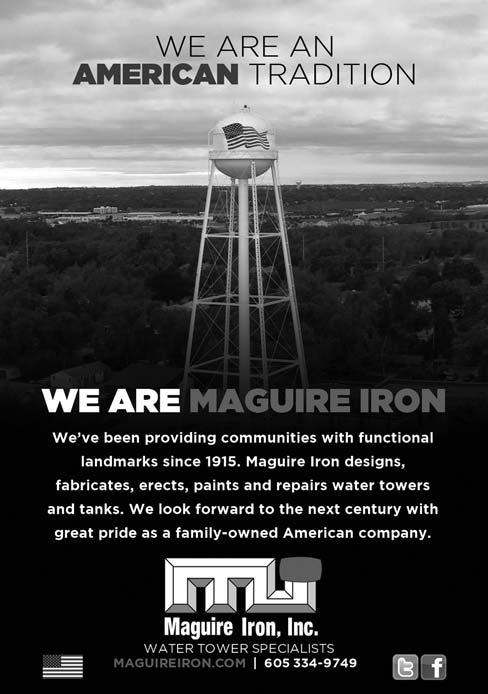
Froiland worked with her 23 sophomore students to develop interview questions, prepare for the interview, conduct the interview and gain an overall respect for those who work to make the Parker community what it is.
The next step was to pair up her students with a leader in the community.
The students wrote letters to community leaders, inviting them to the school and to be part of the event. Twenty three students conducted interviews with 23 leaders in the community. Each sophomore was expected to greet the community member they were interviewing with a handshake and collect some refreshments prior to finding a place to begin their interviews.
In order to work on eye-contact during the interview, the students used their iPads to record the interview instead of taking notes. They had a list of questions prepared but the goal was to communicate in a conversational and informational way.
The project proved to be a big success.
“I loved seeing my sophomores go from apprehension to achievement,” Froiland said. “They were the hosts; they had to be in charge of the situation. Many of the students who were nervous about interviewing someone whom they didn’t know surrounded me at the end and were all talking to me at once because of what they had learned. That was so fun!”
The students concluded the project by creating a Keynote presentation on iPads and presented the information to Froiland, after which, she turned the tables on them by conducting an interview with the student.
Froiland said she sees leadership skills in many of her students and the project helped them find the skills in themselves.
“They often don’t know their own strengths,” Froiland said. “I know they can do it. In fact, they always do so much more when the idea is dropped in their laps, and they need to work it through. To me, that is what the real-world will expect of them.”
With the collaboration on the project between students and community members, the future of the Parker community looks bright, said Froiland.
“I really want to thank the 23 people who were willing to give up their time and answer questions about their past and present, in making and keeping Parker moving forward,” Froiland said. “I knew that these individuals would put my students at ease, give truthful and thoughtful answers and realize that our youth are our future.”
Reprinted with permission from the Associated School Boards of South Dakota.
Sample Personnel Policies Available
The Sample Personnel Policies were recently updated, taking into account the statutory change making it clear that cities do not need to include a grievance policy for non-union employees. This manual is being published to provide cities in South Dakota with a practical guide to managing their human resources.
The League hopes that through this publication, cities throughout the state will realize the value of South Dakota’s human resources and create policies that will further the working relationship between the city and its employees.
Implementation of these policies may be needed to prevent conflicts of interest, discrimination, and preferred employee status, or accusations of such treatment, from interfering with legal and correct business practices.
The samples are not to be considered as, nor substituted for, legal advice. They are for example purposes only.
SD Public Assurance Alliance (SDPAA) members
If you are a member of the SDPAA you can download the manual for FREE.
SDML members that are not members of the SDPAA
If you are a member of the SD Municipal League and not a member of the SDPAA, the manual can be purchased for $125.
For a User Name and Password to download the sample personnel polices from the SDML website, www.sdmunicipalleague.org, contact Lori Martinec at the League at martinec@sdmunicipalleague.org or 800-658-3633.









